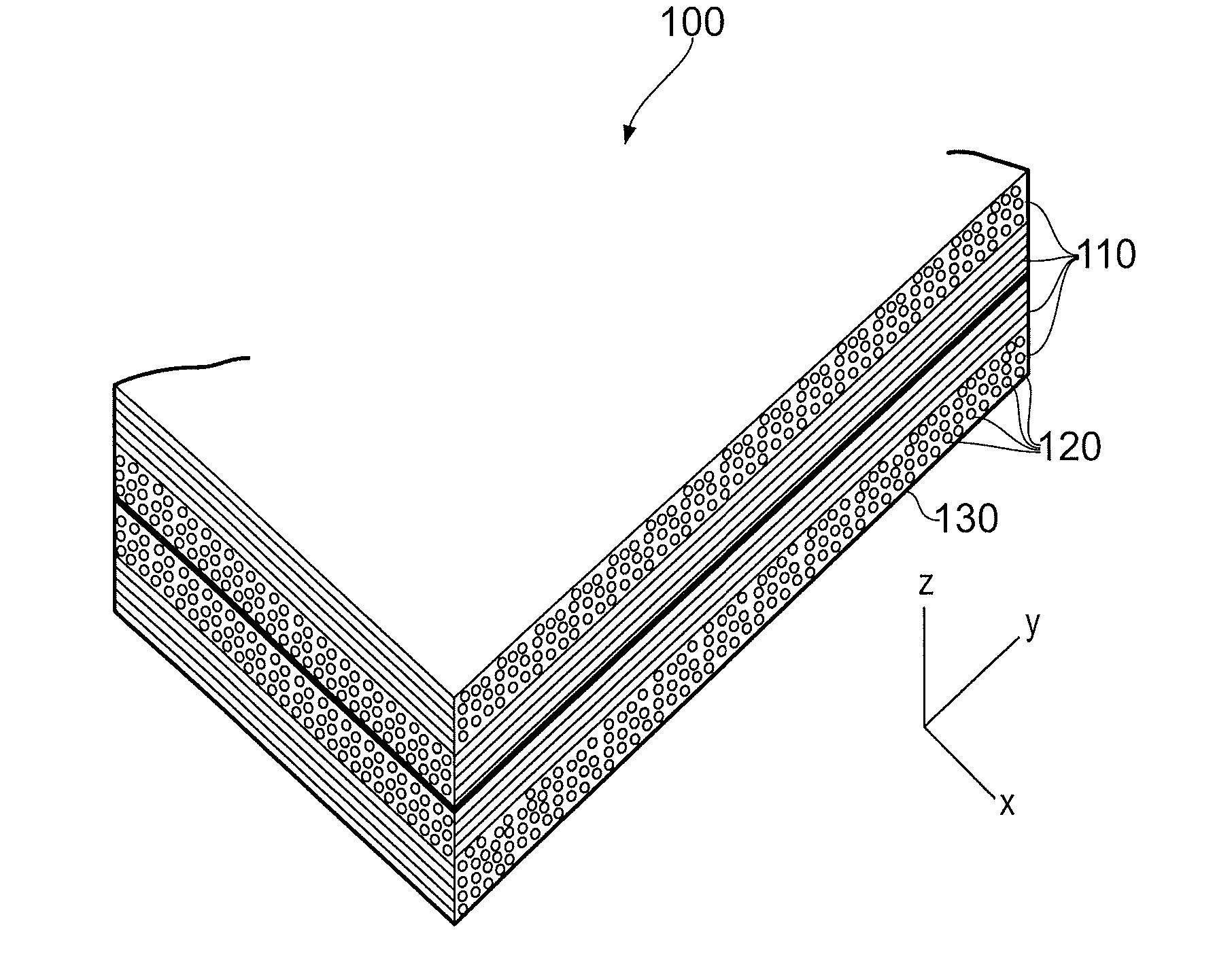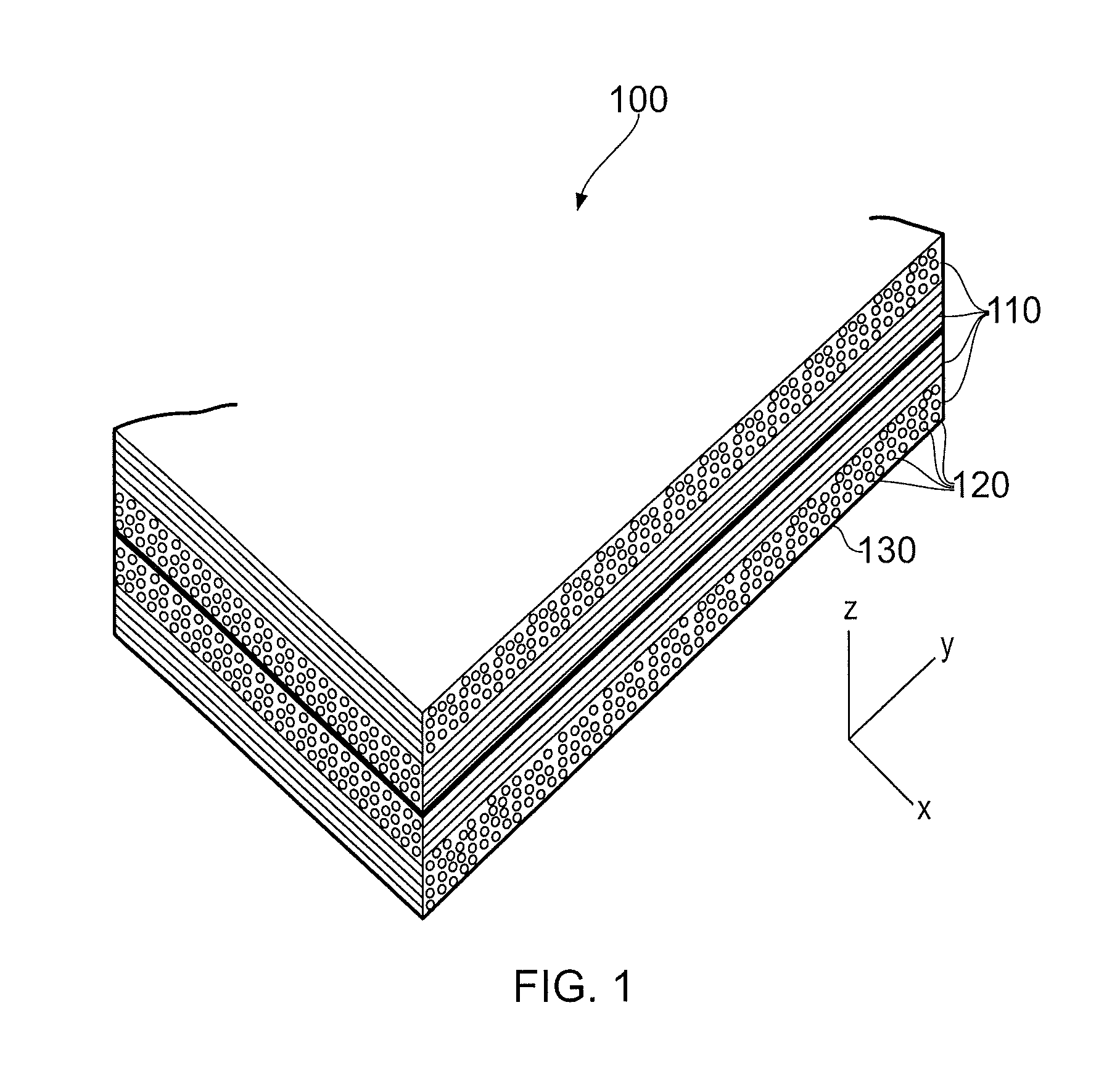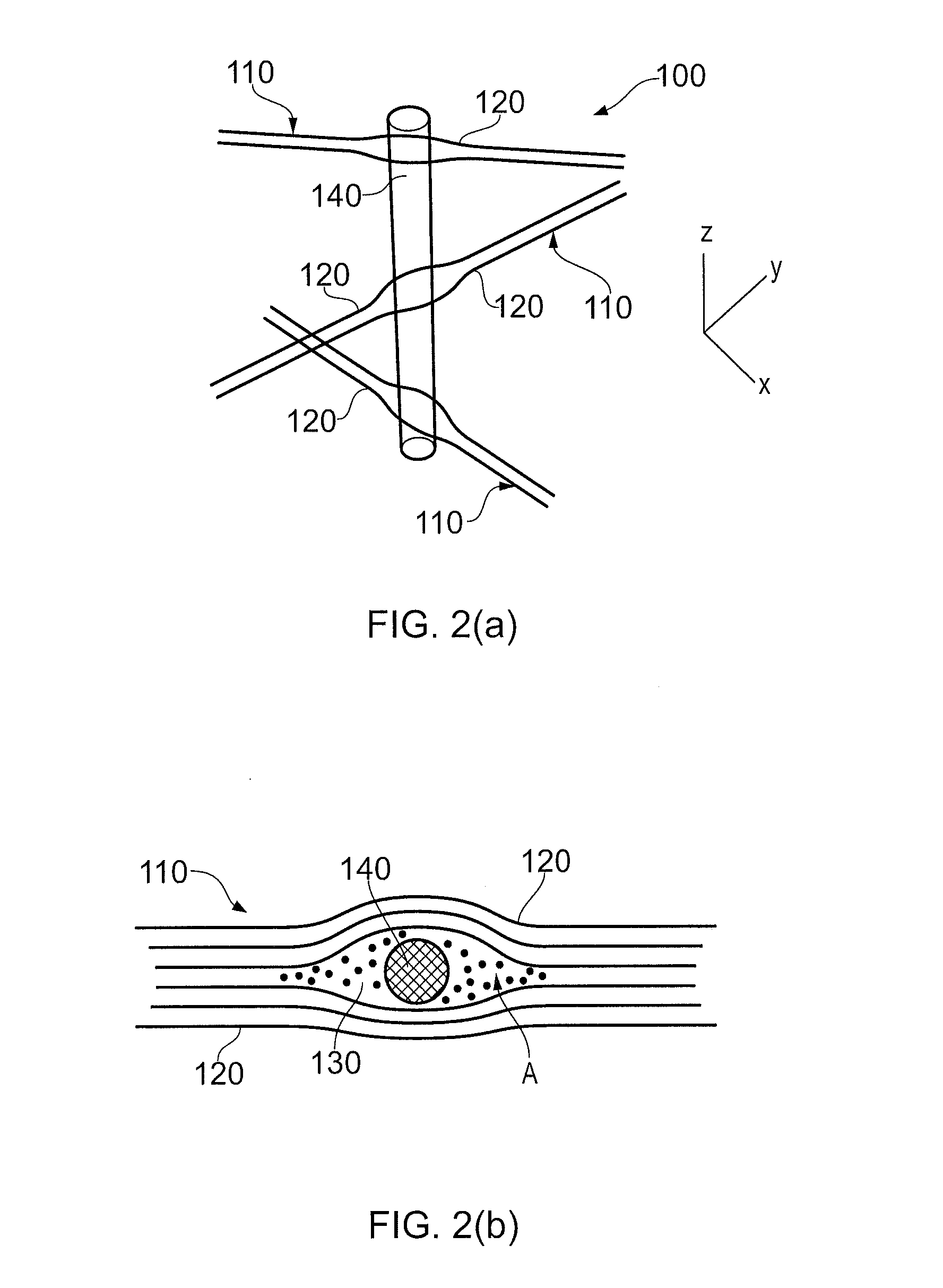Method of manufacturing a composite material including a thermoplastic coated reinforcing element
a technology of thermoplastic coating and composite materials, applied in the direction of wind motor components, non-positive displacement fluid engines, rotorcraft, etc., can solve the problems of poor inter-laminar or through thickness, mechanical properties in comparison to the corresponding in-plane properties, and limit the use of such materials for certain applications, so as to reduce the time, cost and/or practicality of operation.
- Summary
- Abstract
- Description
- Claims
- Application Information
AI Technical Summary
Benefits of technology
Problems solved by technology
Method used
Image
Examples
Embodiment Construction
[0054]FIG. 1 shows an example of a laminated composite material 100 comprising a plurality of fibre layers 110. Each of the fibre layers 110 comprises a plurality of uni-directionally aligned fibres 120 held within a matrix material 130. The matrix material 130 is cured so that the fibre layers 110 and the matrix material consolidate to form the solid composite material 100.
[0055]It can be seen in the example of FIG. 1 that alternate fibre layers 110 are laid up approximately perpendicular to one another. In alternative arrangements, the fibre layers 110 may comprise fibres having other orientations. The relative fibre orientation of each of the layers 110 together with the quantity of fibre layers 110 is determined by the design loads to which the finished component is to be subjected.
[0056]In FIG. 1 the fibre layers 110 of one orientation lie along the X direction while those of the alternate orientation lie along the Y direction. Were the composite material 100 of FIG. 1 to inclu...
PUM
| Property | Measurement | Unit |
|---|---|---|
| melting temperature | aaaaa | aaaaa |
| temperature | aaaaa | aaaaa |
| thickness | aaaaa | aaaaa |
Abstract
Description
Claims
Application Information
 Login to View More
Login to View More - R&D
- Intellectual Property
- Life Sciences
- Materials
- Tech Scout
- Unparalleled Data Quality
- Higher Quality Content
- 60% Fewer Hallucinations
Browse by: Latest US Patents, China's latest patents, Technical Efficacy Thesaurus, Application Domain, Technology Topic, Popular Technical Reports.
© 2025 PatSnap. All rights reserved.Legal|Privacy policy|Modern Slavery Act Transparency Statement|Sitemap|About US| Contact US: help@patsnap.com



